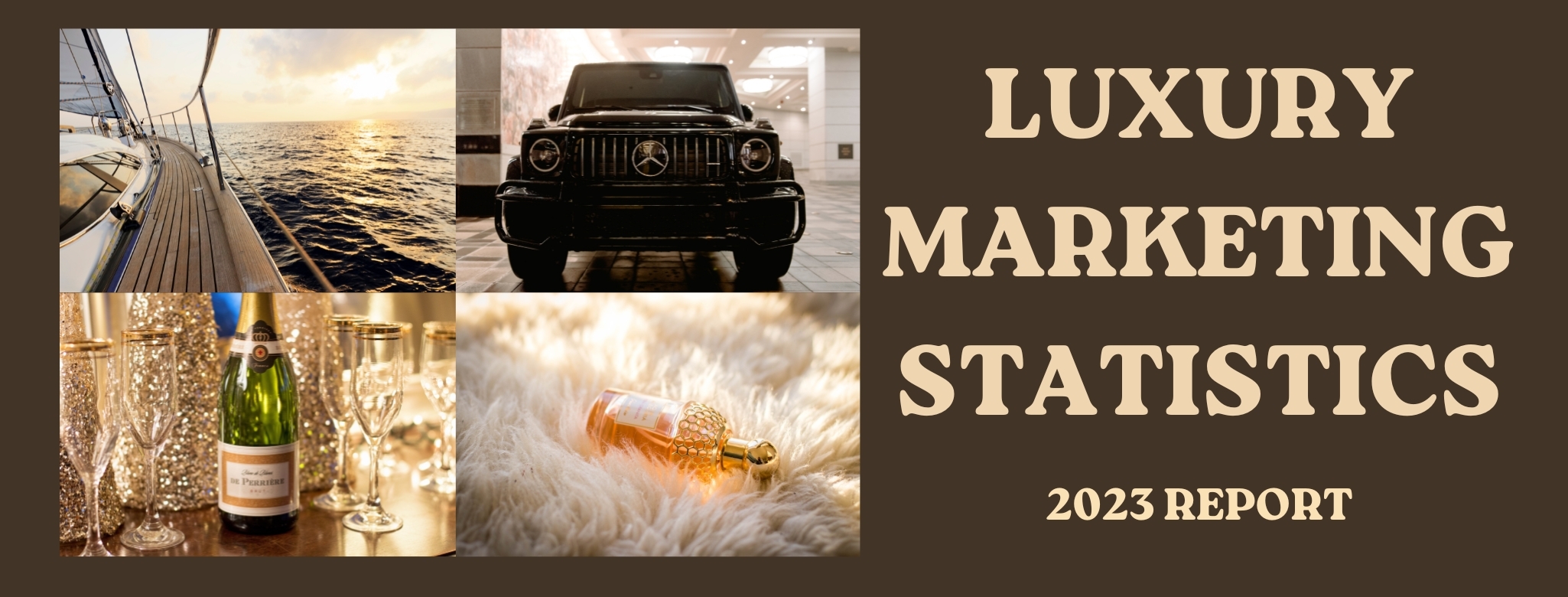
31 May LUXURY MARKETING STATISTICS IN 2023
What will the luxury marketing landscape look like in 2023? To get a glimpse into the future, we took a look at some of the top luxury marketing statistics. As businesses strive to find new and innovative ways to connect with luxury consumers, luxury marketing statistics continue to evolve. The approximate value of the global luxury market in 2022 is 242.8 billion USD. This represents a significant growth opportunity for brands that are able to understand and connect with this coveted consumer group. So what does the future hold for luxury marketing in 2023?
From rising demand for luxury products to shifting demographics, here are some key trends and statistics.
Luxury Marketing Statistics (Editors Choice)
- Luxury fashion brands spent over $6 billion on ads in 2020
- Luxury car brands had over $8.95 billion in annual ad spend in 2021
- Millennials are set to account for 70% of the luxury market by 2025
- Fashion luxury brands invested $1.4 billion into influencer marketing in the Q3 of 2021
- Luxury sales in China reached an all-time high of $74.3 billion in 2021
Top 14 Luxury Marketing Statistics in 2023!
LUXURY MARKETING STATISTICS #1 – Luxury Fashion Brands Spend Over $6 Billion on Ads in 2020
The fashion industry is a multi-billion dollar industry that is constantly evolving. Fashion luxury brands are at the forefront of this change, always innovating and pushing the boundaries of what is possible. In 2020, the top three fashion luxury parent organizations – LVMH, Coty and Kering Group – accounted for $6.69 billion in total marketing spending. This represents a significant investment in the future of the industry. According to Statista, LMVH alone invested $5.25 billion in the marketing campaigns, followed by Coty with $1.3 billion worth of marketing investment, and Kering Group with $139.5 million in ad spend. Burberry’s ad spend for 2021 was 3.9 million dollars.
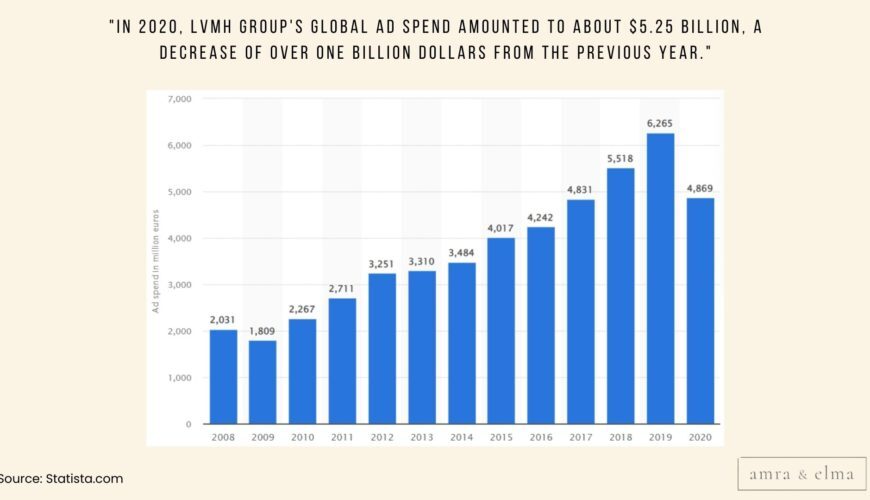
LUXURY MARKETING STATISTICS #2 – Luxury Car Brands Spend Over $8.95 Billion on Ads in 2019
In 2019, luxury car companies Volkswagen Group AG, General Motors, and BMW Group spent a combined $8.95 billion on advertising. Of that amount, Volkswagen Group AG accounted for $5.7 billion in global ad spend, while General Motors and BMW Group respectively spent $2.95 billion and $300 million on advertising in the US market. The high level of ad spending by these companies reflects the intense competition in the luxury car market. In order to maintain their market share, luxury car companies must continually invest in advertising and marketing initiatives that will capture the attention of consumers. With billions of dollars at stake, it is clear that the luxury car market is one of the most competitive industries in the world.
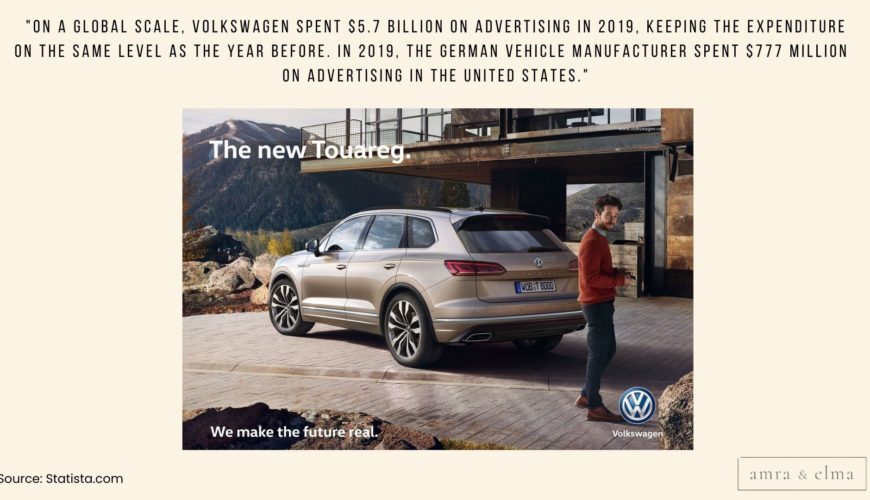
LUXURY MARKETING STATISTICS #3 – Luxury aircraft manufacturers invested over $362.5 million in advertising in 2021
The global ad spend for luxury aircraft is estimated to be worth over $362.5 million in 2021, with leading manufacturers Bombardier and Boeing accounting for a large share of this total. According to Statista, Bombardier Recreational Products Inc’s selling and marketing expenses for 2021 were $262.5 million, while Boeing spent $100 million on advertising and promotion. With such high levels of expenditure, it is clear that these companies are committed to maintaining their position in the luxury jet market. Given the current economic climate, it will be interesting to see how these companies perform over the course of the year.
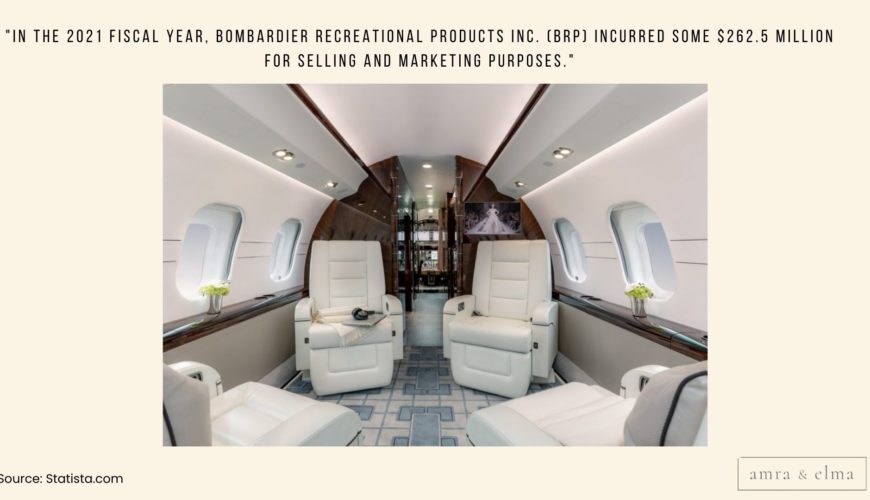
LUXURY MARKETING STATISTICS #4 – Luxury brands are spending 33% of their advertising budgets on digital marketing
Luxury brands are increasingly turning to digital channels to reach their target audiences. In fact, according to Gartner, luxury brands are currently spending 33% of their advertising budgets on digital marketing, up from just 10% in 2012. This shift has been driven by a number of factors, including the growing popularity of social media and the proliferation of mobile devices. With the rise of social media, ad professionals are increasing their spending on digital platforms. In a recent survey by WARC, it was found that 66% of them plan to boost ad spend this year for TikTok, 61% of them said they would do so with YouTube, while 60% and 57% of them plan to do the same with Instagram and Google respectively. Luxury brands are also seeking to capitalize on the increasing globalization of the luxury market. As more and more consumers from around the world have access to luxury products, digital marketing provides an efficient way to reach these potential customers. Luxury brands are therefore expected to continue to increase their investment in digital marketing in the years to come.
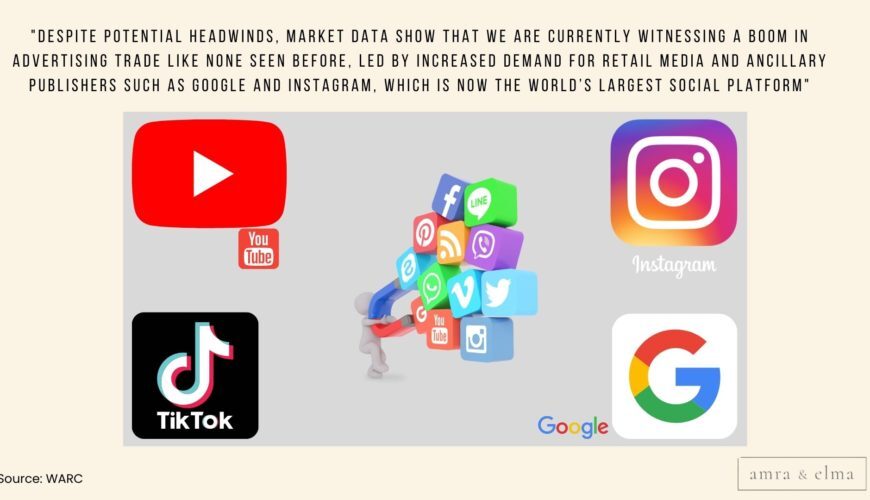
LUXURY MARKETING STATISTICS #5 – Gen Y and Gen Z customers will remain critical growth levers for the luxury sector in 2022 and beyond
Luxury brands have long been associated with quality and exclusivity. However, there has been a shift in the luxury market in recent years, with millennials (Gen Y) and Gen Z customers asserting their position as critical growth levers. According to Bain & Company these younger generations of affluent consumers are set to account for 70% of the luxury market by 2025 and contribute 130% of luxury market growth. This generational shift will only accelerate in the coming years, as next-gen affluent consumers increasingly demand instant gratification, customization, and experiences over traditional luxury goods. In order to survive and thrive in this new landscape, luxury brands must adapt their strategies to appeal to these next-gen customers.
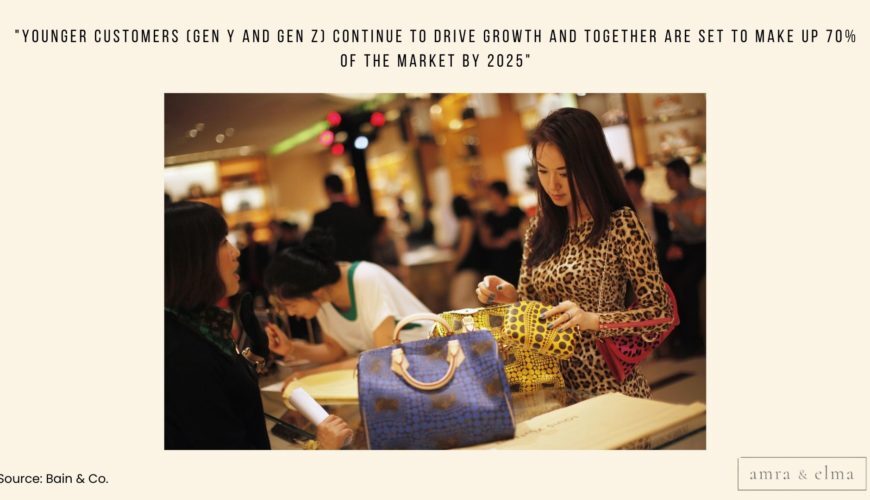
LUXURY MARKETING STATISTICS #6 – Studies show that 22% of 2.7 million global internet users use video sites such as YouTube to research brands
The internet has changed the way that people research and buy products. In the past, consumers would go to brick-and-mortar stores to touch and feel products before making a purchase. However, with the advent of online shopping, many consumers now do their research online before ever setting foot in a store. This is especially true for luxury goods, which often require a higher level of investment. A recent study by GlobalWebIndex found that 22% of global internet users use video sites like YouTube to research brands and products. This indicates that brands need to have a solid online presence in order to reach potential customers. By creating engaging and informative videos, luxury brands can reach a wider audience and build trust with potential customers.

LUXURY MARKETING STATISTICS #7 – Leading Fashion luxury brands invest $1.4 billion in influencer marketing
According to Statista, some of the leading fashion luxury brands invested approximately 1.4 billion USD in influencer marketing in Europe in the third quarter of 2021. Brands cooperated mainly with all-star influencers who have a broad online reach (more than two million followers) and engage with diverse social media platforms. These influencers garnered 1.13 million USD or 80% of the total influencer marketing Media Impact Value of these brands. This investment indicates a trend of fashion luxury brands turning to influencer marketing to reach consumers.
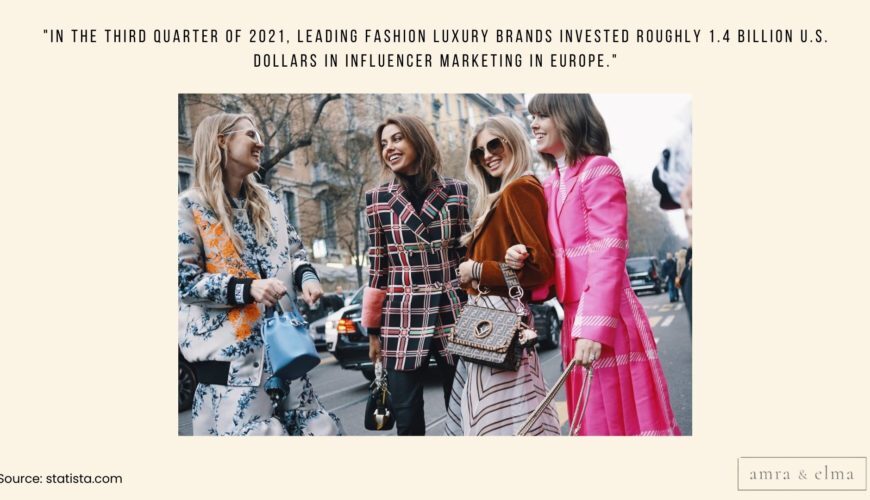
LUXURY MARKETING STATISTICS #8 – From 2014 to 2019 luxury ad spend in the United States increased by 11%
Luxury advertising spending in the United States has been increasing steadily since 2014 according to Statista, rising from $4.93 billion in 2014 to $5.49 billion in 2019. This increase can be attributed to a number of factors, including the growing popularity of luxury brands among affluent consumers and the increasing effectiveness of digital marketing channels. Luxury brands are also benefiting from the continued growth of the e-commerce sector, as more shoppers are buying high-end goods online.

Social media is a powerful tool that can drive discovery and purchasing decisions. According to Klarna, 3 in 4 luxury shoppers in the USA (75% of luxury shoppers) purchased a product after discovering it on social media. This number was even higher among younger age groups, with 84% of Gen Z shoppers and 78% of Millennials making a purchase after discovering a product on social media. Instagram has become the go-to platform for luxury brands looking to reach Gen Z and Millennials. About 77% of Gen Z and 63% of Millennials have purchased a luxury item after seeing it on Instagram. By contrast, the majority of Baby Boomers (77%) and Gen Xers (63%) have purchased a luxury product after discovering it on Facebook. This difference is likely due to the fact that Instagram is more visually oriented than Facebook, and thus more effective at showcasing luxury products. In addition, Instagram is known for its influencer culture, which can be highly influential in convincing consumers to purchase expensive items.
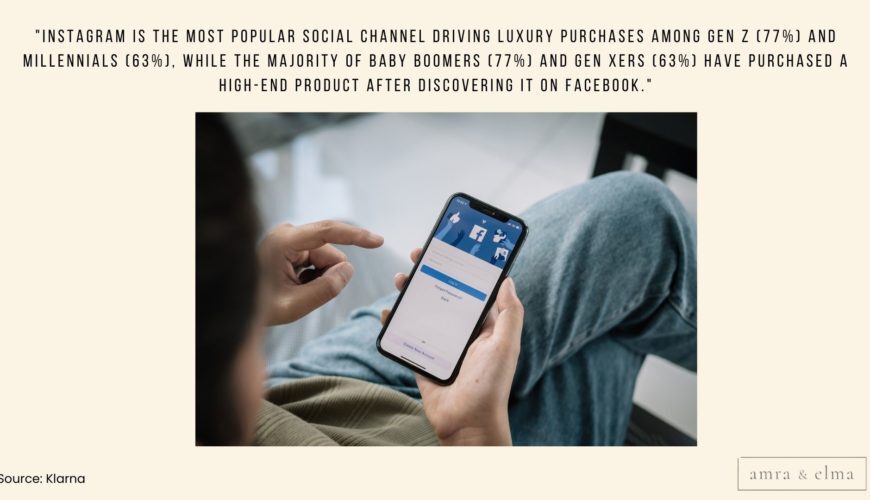
LUXURY MARKETING STATISTICS #10 – Global sales of luxury goods to reach between $322.2 – $332.9 billion in 2022
Sales of luxury goods has grown 4% between 2019 and 2021, reaching $303.9 billion. Bain estimates a further increase in sales to between $322.2 billion and $332.9 billion in 2022. This growth is being driven by a number of factors, including rising incomes in emerging markets, increased consumer confidence in mature markets, and the increasing demand for transparency from customers about where and how products are made. In response to this demand, brands like Chanel, Zegna and Prada have begun to acquire more of their suppliers. This allows them to better control the quality of their products and ensures that customers can trust that their products are made ethically and with the best materials available.

LUXURY MARKETING STATISTICS #11 – By 2025 online sales expects to account for 30% of the global luxury market
There is no doubt that online sales has been growing rapidly in recent years, as more and more consumers turn to the internet for their shopping needs. And while this trend has been most pronounced in the sale of non-luxury goods, it is also starting to have a significant impact on the luxury market. In fact, according to a recent report from Bain & Company, online sales of personal luxury goods are expected to surpass all other channels within the next four years.
While online sales currently account for 22% of the global luxury market (grown from 12% in 2019), Bain & Company projects that this figure will rise to 30% by 2025. This growth will be driven by a number of factors, including the increasing number of luxury shoppers who are millennials and Gen Zers (who are more likely to shop online than older generations), as well as the continued expansion of luxury e-commerce platforms such as Net-a-Porter and Gilt. The online sale will be then followed by mono-brand physical retail stores (28%), outlet stores (14%), specialty stores (11%), department stores (11%), and travel retail (6%).

LUXURY MARKETING STATISTICS #12 – China to Lead the World in Luxury Consumption by 2025
While the rest of the world was struggling to adapt to the unprecedented challenges of 2020, China’s luxury market was thriving. According to Bain &Co. luxury sales in China reached an all-time high of $74.3 billion in 2021, with a 36% increase from 2020. This is almost double the amount spent on luxury goods in 2019, and China is now on track to become the world’s biggest luxury market. A partner at Bain, Bruno Lannes, expects that until 2025, China will represent between 40% and 45% of global luxury goods sales. The strong growth of the Chinese luxury market is largely due to the country’s burgeoning middle class, which has been increasingly embracing a lifestyle of consumption and ostentatious displays of wealth.
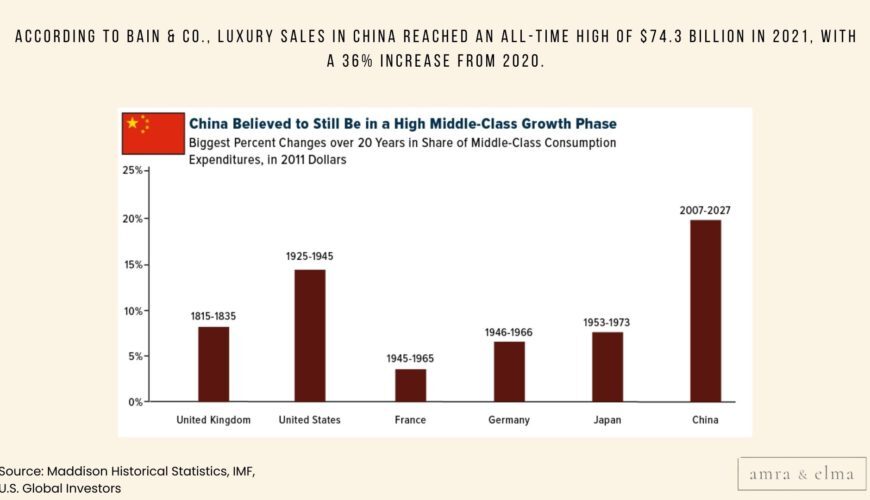
LUXURY MARKETING STATISTICS #13 – The average age of the world’s wealthiest demographic group is 43
According to Deloitte Global Powers Of Luxury Goods, the average age of the world’s wealthiest demographic group is 43, with an income exceeding $100,000. This new generation has been called “High earners not rich yet” (HENRY) because, while they can afford luxury brands, that doesn’t always mean these individuals are flashy or status-driven. Rather, they are sophisticated consumers who understand quality materials and the craftsmanship that goes into making high-end items. Luxury brands have already started targeting this new generation that is very interested in sustainable and ethical initiatives taken by brands. They are also very active online shoppers but still prefer to visit brick-and-mortar stores for specific items.
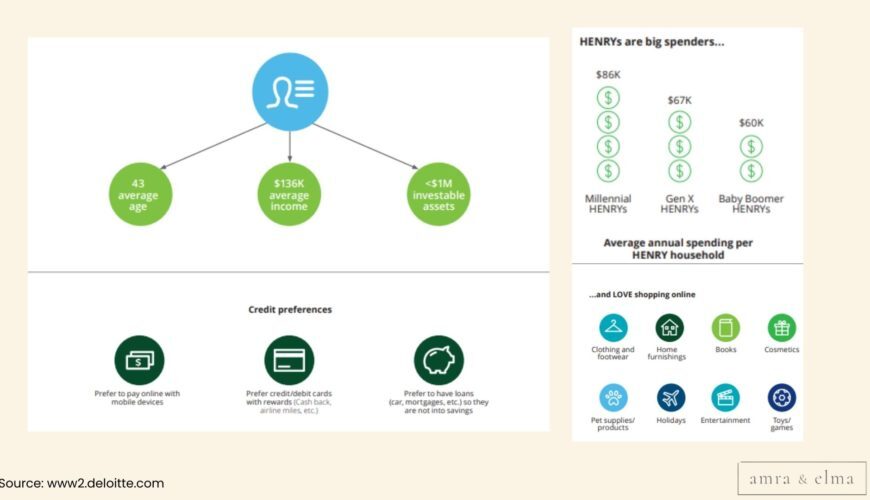
LUXURY MARKETING STATISTICS #14 – Luxury marketing professionals are searching for influencers with an average number of 101k to 500k followers
According to the latest data from Ordre, 101,000 to 500,000 followers is the average number of followers that luxury marketing professionals are searching for when it comes to choosing an influencer to recommend their brand. The second option are the all-star influencers that have over 2 million followers. The objective is to create high-quality, authentic content that delivers the brand message in an engaging way. By working with an influencer who already has a strong relationship with their audience, businesses can tap into a ready-made source of potential customers. However, it is important to ensure that the content feels genuine and relevant, rather than coming across as a blatant advertisement.

The Future of Luxury Marketing
The data collected provides a snapshot of the current state of luxury marketing. It indicates that online advertising is the most effective means of reaching luxury consumers, followed by print and television. Luxury brands are also increasingly using social media to connect with their customers. However, it is important to note that the luxury market is constantly evolving, and these trends may not hold true in the future. As such, it is important for luxury marketers to stay up-to-date on the latest trends in order to effectively reach their target audience.
What Is Luxury Marketing and Why Is It So Popular?
Luxury marketing is a form of marketing that is used to target consumers who can afford to purchase high-end products and services. Luxury brands typically offer products and services that are of higher quality than those offered by other brands, and they often have a higher price tag as well.
There are many strategies that luxury marketing specialists can use to target luxury consumers. Some of the most common include creating an image of exclusivity, targeting affluent audiences, and using high-end advertising and marketing strategies.
Brands in luxury marketing often try to create an image of exclusivity by targeting affluent audiences. This can be done by offering products and services that are only available to a select few, or by making it difficult for consumers to purchase their products. Luxury marketing brands also often use high-end advertising and marketing strategies, which can include expensive TV commercials, print ads in luxury magazines, and even sponsorship deals with celebrities.
Ultimately, the goal of luxury marketing is to convince consumers that purchasing a high-end product or service is worth the extra money. By targeting affluent audiences and using sophisticated marketing techniques, luxury brands can create an image of exclusivity and superiority that encourages people to spend more money on their products.
There are many key benefits to luxury marketing. First, it can help you bring in new clients and consumers, and improve the brand’s sales and revenue. Luxury brands have a loyal following, but reaching out to wealthy consumers who may not be familiar with your product can help expand your business. Additionally, luxury marketing can help you maintain customer loyalty. When customers feel like they are getting something special and unique, they are more likely to stick with your brand.
Another benefit of luxury marketing is that it can help you command a higher price for your products. Consumers are often willing to pay more for premium brands and products, so by positioning your business as a luxury option, you can increase your profits. Finally, luxury marketing can create an aura of prestige around your company. This can make consumers more likely to do business with you and give your brand a positive reputation.
Luxury marketing became very popular in recent years because it allows businesses to charge a premium price for their products and services. When done correctly, luxury marketing can create a perception of exclusivity and high quality among customers. This can lead to increased profits for businesses, as customers are willing to pay more for products that they believe are of a higher quality.
In addition, luxury marketing can help businesses to build a strong brand image. A strong brand image can be extremely valuable, as it can make it easier for businesses to attract new customers and retain existing ones. By associating their products with luxury and high quality, businesses can make them seem like an investment worth making for consumers.
Overall, there are many reasons why luxury marketing is effective, beneficial, and trending. It can allow businesses to charge more for their products, build a strong brand image, and create a perception of exclusivity and high quality among customers. If done correctly, luxury marketing can be an extremely effective way to boost profits and grow a business.

